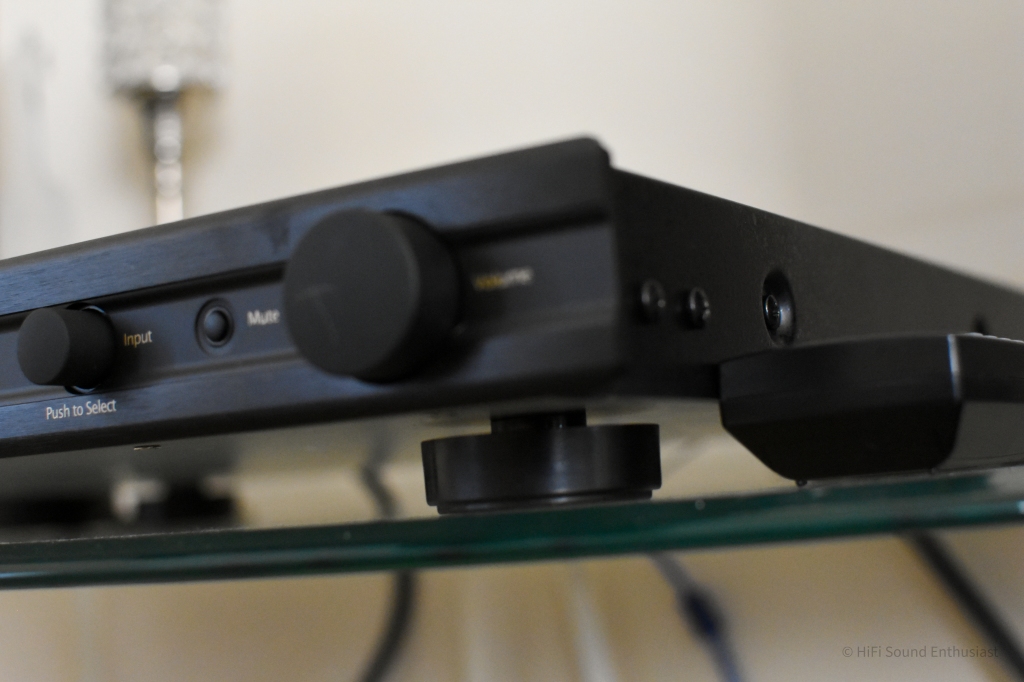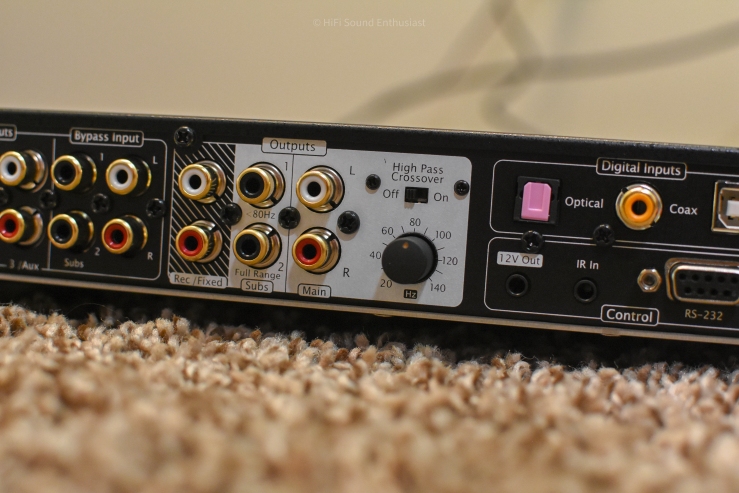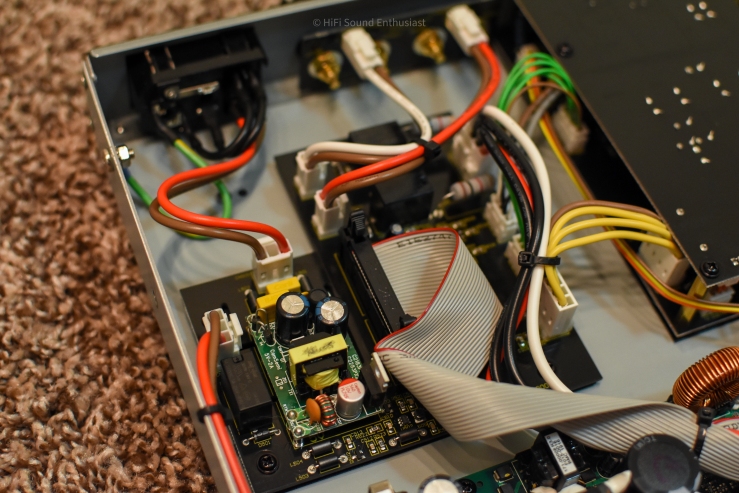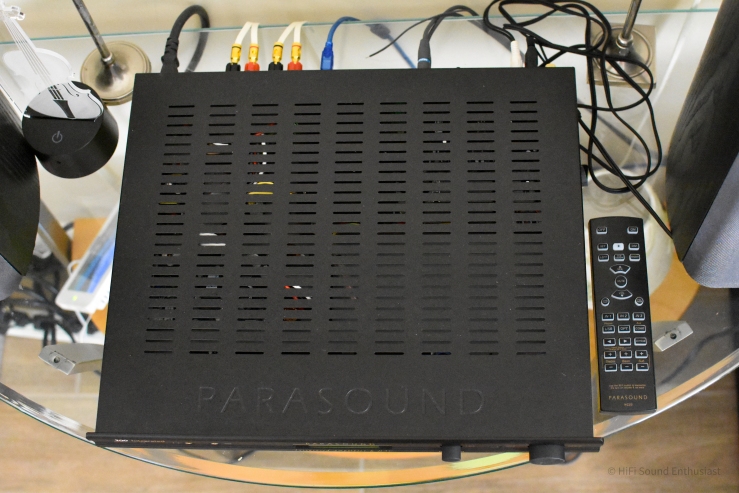
Introduction
When I reached out to Parasound to propose an opportunity to work together, the swift response and experience gave a good impression from the get-go. When it arrived promptly about a week later, to my excitement. I may have had some expectations for a product like this from a reputable company, but long-story short, I wasn’t disappointed. The company takes pride in their products which is obvious in many ways, from how greatly the product was packed to the product itself. Not to mention, this integrated is also very feature laden. But features and presentation may mean nothing in the face of the quality we all look for: the sound.
Credits and Disclosure
For full-disclosure purposes, Parasound in this review has only loaned me their product for review. They have in no way influenced my evaluation process and have only seen it to fact-check my review. Everything that has been said is my own evaluation of the product offer in my own words. I once again thank them for the opportunity.
Set up

As typical of my reviews, I allow for about a week of daily listening (about 4-5 hours per day) before I critically evaluate any component, just in case there is any “burn in” and changes the sound. Although there are a lot of changes from my previous review, rest assured I will take those changes into account when I evaluate the product, for a fair comparison and evaluation. Just for the record, the changes from the last review includes no-longer tilting-up the RS250, speaker placement with the RS250, the addition of my Massdrop X Sennheiser HD6XX headphones, Yamaha CDC 905 5 CD-changer player and the larger, wider desk. The desk sits me lower than the previous one, hence for such changes in the tilting. For testing purposes as well, I slotted the Parasound into different systems in my house just to see how it performs, which will be further discussed below.
As this integrated has tone control options, for comparison and fairness they were set to flat (zero all) for the critical listening evaluation. Everything else is the same, such as the Lenovo P43s laptop for playback via USB, the speakers, and the use of Qobuz and Spotify as the main streaming sources for the evaluation. The Yamaha CD player was used to test both the analog and digital performance of the amplifier.
Specifications
Power Output – Both channels driven
(0.05% THD, 20 Hz – 20 kHz)
110 watts x 2 @ 4 Ω or 8 Ω (RMS)
Power Output – Both channels driven
(1% THD, 20 Hz – 20 kHz)
125 watts x 2 @ 4 Ω or 8 Ω (RMS)
Frequency Response:
20 Hz – 20 kHz, +0 / -0.05 dB
10 Hz – 80 kHz, +0 / -3 dB
Total Harmonic Distortion (20 Hz – 20 kHz):
< 0.05 %, (110 watts, 8 Ω)
Interchannel Crosstalk:
-75 dB at 20 kHz
-85dB at 1 kHz
Preamp Output:
250mv = 1V output
Total gain = 12 dB (volume set to 100)
Unity gain = Volume set to 76
Maximum output = 3.5V
Phono Stage Gain / Input Impedance:
MM: 40 dB / 47 k Ω
MC: 50 dB / 100 Ω
Line Level Input Impedance: 24k Ohms
Preamp Output Impedance: 470 Ohms
S/N Ratio – Line Inputs:
>100 dB, input shorted, IHF A-weighted
S/N Ratio – Digital Inputs:
>110 dB, input shorted, IHF A-weighted
DAC IC: Burr-Brown PCM1798 DAC
Maximum Sampling Rates (PCM only):
USB: 96kHz – 24 bit
Optical: 192kHz – 24 bit
Coax: 192kHz – 24 bit
DC Trigger Output: 12 Vdc, 50mA
AC Power Requirement:
Standby: 0.5 watts
Idling: 15 watts (no music playing)
Typical: 50 watts (music playing)
Maximum: 300 watts
100-250 VAC 50/60 Hz (automatic)
Dimensions:
Width: 17.25″ (438 mm)
Depth: 14.75″ (375 mm)
Depth: 16.75″ (425 mm) with cables connected
Height, with feet: 2.5″ (63.5 mm)
Height, without feet: 1.75″ (44.5 mm), 1U
Rack mounting requires RMK-11(sold separately)
Weight:
Net: 11.5 lbs (5.2 kg)
(taken and modified from the official Parasound NewClassic 200 Integrated product page)
Build Quality and Impressions
From the outer packaging alone, I wouldn’t have been able to tell this was double boxed. I pictured my unboxing experience as you can see, and the packing was definitely no slouch compared to what I’ve seen from other audio companies. Good quality cardboard and padding materials are used to ensure safe shipping of the product.

Other than the product, you also get the owner’s manual, a remote, a USB-A to USB-B cable, a power cable, and batteries for the remote. The remote, battery, and power cable are loosely placed in a smaller enclosure that was securely tucked in between the padding in the box. Both the power cable and the USB cable included are of decent length. The USB cable length is enough for a desktop configuration where you can have your laptop near the integrated amp.

Featuring a full size 17” chassis, the Parasound NewClassic 200 integrated amplifier also comes with many useful features and an abundance of ways for you to play music from. From 3 types of digital connections, to 4 analog inputs, you have many options and choices to conveniently plug and play through the integrated. If you have a stereo/home theater system, this also accommodates integration with your home theater with the provision of a dedicated by-pass input/output. It all fits in this very thin looking chassis with only 1.75” in height (without feet), which seems very thin in comparison to many components out there. But don’t let its thin appearance fools you. Impressively this packs a beefy amplifier with an output of 110 watts at 0.05%THD to both 4 or 8 ohms. Although I think this integrated packs many useful features, it is missing wireless playback conveniences. It is but a minor inconvenience in my opinion, although sometimes I wish it is there.

Although the label on the product itself specifically says this integrated amplifier is more of an “integrated amplifier & DAC”, I would prefer to call this a “modern” integrated amplifier. As more digital sources become mainstream, more and more integrated amplifiers now include DACs for playback of digital signal. The NewClassic 200 uses a Burr-Brown DAC chip that I believe was also used in the company’s previous Halo P5 preamplifier. The DAC can decode up to 24 bit/192 kHz from both the Coax and Optical inputs and 24 bit/96 kHz from the USB input, which uses an older USB 1.0 port. Although the USB port does not have the latest specs, the amplifier’s digital processing capability is more than enough for producing high quality sound. In terms of the analog section, there are 4 available inputs. On the back, the marked first input doubles as a phono input, able to receive both moving magnet (MM) and moving coil (MC) turntable cartridge at the flick of a switch. The only non multi-purpose input is the second one, being purely just an analog line-level input. That is because the third input is shared with the Aux input at the front of the device, so if the front connection is used, this input is disabled. Hence, in total there are 3 simultaneously recognizable inputs at a time.

Overall, the Parasound NewClassic 200 integrated amplifier is a good looking product. You can see a big indent of the company name on the top cover of the unit. The Parasound name is also found on the top-middle of the faceplate right above the display in a darker gold ink, in contrast with the all-black design, which looks nice. All the labels on the front except for one are in the same dark gold ink, which you can also be found on the remote. Centered on the face is the main display of the integrated, which is a nice legible display with green backlighting. It is a little small, as it can be hard to make out from one of my testing systems which has me sitting about 8 feet away. On the right of the face from the picture is the power button centered on an LED ring that will light up green or red for the power modes of on and standby respectively. Right beside that is the 3.5mm headphone jack as well as the mentioned 3.5mm (1/8”) aux jack. For those with headphones (more typically high-end ones) that only end in the larger 1/4” jack, you may have to scour the internet for an adaptor. On the other side of the display is an input select knob which is pressable for tone control and other features such as balance and sub level. Between that and the large volume knob on the left, is a mute button, that is also surrounded by an LED ring, which lights red if the mute is on. There is a clean, symmetrical and minimalist look to the face of this unit with only 3 buttons/knobs to the left and right of the display. The supplied remote has a very complete, well organized, well thought-out layout. It has the ability to do many useful features such as setting a favorite volume to go back to, going between the 2 stages of screen brightness, and a nice backlighting to see in the dark. On the topic of the backlighting, it is a blue-purple light that seems bright during the day, but isn’t blinding at night. Construction-wise it’s very solid, a little tall, but very comfortable to hold.

The input-output connections on the back of the unit are organized neatly and logically. I found it quite easy to identify the general connection locations without looking straight at its rear. On the back you can also see controls for the high-pass crossover, which is a rather unique feature I will discuss more in following section. On the first input, which is towards the left in the picture, is the 3-stage switch to go from line input to MM or MC vinyl cartridges. From there going through to the right, are the very neat and logical organization of the connections. It goes from analog inputs, outputs, digital inputs, and lastly speaker output. From a testing standpoint this is very convenient as I plug and unplug at lot, and I can just plug in to a suitable input when I was testing without moving or looking at the rear markings because of this organization. If you place this in a tight location as well, this will become helpful so that you don’t plug into the wrong connection. Either way, bonus points from me as it made my job easier as well.

Despite missing wireless conveniences such as Bluetooth or wireless streaming, this integrated is packed with full of useful features. Every feature has a very useful purpose for convenience or sound that I feel is more likely to be used than not. It is also very compact and has almost no wasted space at the back. Even if there is a lot going on at the back, it does not feel like it does.
Sound Impressions
Despite being Parasound’s entry-level offering for an integrated amplifier, this thin-looking Parasound packs a very strong punch. Like I mentioned before, definitely do not judge this integrated by its specs. If I did a blind test with this amplifier, this integrated has a sound that I would ball-park in a much higher price point (MSRP $1195). I very much like the characteristics of the sound of this amplifier. The level of detail, accuracy and imaging is high-class in many ways.
Although certain aspects of imaging are handled and can be dependent on the speakers, the upstream components do make a difference. In this case, the Parasound creates a nice, deep stage. Although I rarely get image extension beyond the speakers, it doesn’t sound constrained, which usually is the case. The Parasound can rather effortlessly portray any location between the speakers with relative ease and high accuracy, which is impressive. For a great system I like to look for the area between the center point between the speakers and the speakers themselves. If they can be portrayed very nicely, you have yourself rather top-notch system for imaging. With it, your system presents more than just 3 mains points in general for stereo imaging, which are the center of the speakers, and the speakers themselves. Despite the rather limited width of the stage with this Parasound and speakers I tested with, everything is still a wide, spacious sounding stage where you can pinpoint and layer where instruments or vocals are. A very live experience in the comfort of your own home.

Furthermore, the tonal characteristics of the NewClassic 200 integrated pairs very well with all the speakers I’ve tested. With all the main speakers used for testing, the realism stands out in my experience with the product. It has a speaker-influenceable, mostly neutral but slightly warm and full character. Pairing it with the NHT SB1, a rather clinical and transparent speaker, it has a more neutral sound, but pairing it with the warmer and less revealing Onix Rocket RS250 reveals how it can sound also slightly warm. With the Sony SS-K10ED, a very neutral but slightly warm speakers, the system presents a slightly warmer sound than my previous experiences with it, which made me conclude it giving a slightly warm sound. Despite it being slightly warm, it does not hinder the energy and realism produced from the high-frequencies, such as when cymbals are played. Oh, the highs, let me tell you! The Parasound with all 3 of the main testing speakers presents very metallic, extended and hence very accurate, realistic cymbals. That also holds true to the sibilance I hear in vocals, which is very realistic and not exaggerated. The overall sound characteristics present a nice balance of warmer mids and lows, with a bright and extended high. Additionally with vocals, the Parasound exhibits airiness, which is rarely found in a system at this price. As a result, vocal tracks have this impression of the artists’ breath as they sing, which adds to an already very realistic musical experience. Not to forget, the Parasound has this composure to it, completing the realism experience when listening to the NewClassic 200 integrated. Typically, I would hear such composure and realism with more expensive systems, so it is very impressive that Parasound can present such a sound with their budget-priced integrated.
With the included headphone amplifier, there is a similar sound characteristic exhibited with the main speaker playback experience. Listened through my V-Moda Crossfade Wireless II headphones, I get a slightly warmer but mostly neutral sound. An increase in depth and realism can be heard when compared to the Audiolab P-DAC portable headphone amplifier, which I typically listen to in my commuting setting. However, with the Massdrop X Sennheiser HD6XX headphones, the sound can be a little too harsh for my liking at times. Overall accuracy and separation is only slightly improved. If you pair it with a smoother DAC like my Music Hall DAC15.2, the sound from the headphones is smoother and more to my liking, so you can affect the sound from your headphones this way if you don’t really prefer how it sounds. Overall, this is a decent headphone amplifier that can power most headphones in the market.
For my testing with the phono module of the NewClassic 200, I used a Rega Planar 1 (RP1) turntable with the upgraded performance cartridge. Beforehand I had heard how the RP1 performed with the phono features included in some receivers and surround sound processors like the Marantz AV8802, but with the Parasound it was such an improvement. Unless there was an obvious fault with the vinyl such as scratches and the like, the playback was nice, smooth and clear. Although most of the vinyl I have were bought used, the only new one is an Ed Sheeran Divide album, and I could barely tell a difference if I played the same songs back through digital streaming from either Spotify or Qobuz. Only small faults such as little dust could be heard, and a small hum on empty sections on the vinyl. On the older vinyl micro-scratches can sometimes be heard if it was bad enough, but it did mask a lot of much smaller crackles and pops I could hear if I used the surround sound processors. With such an impressive phono module included in the Parasound, it only further completes such a great sounding all-in-one package.
On the topic of completing the package, to touch on upgrades, if you desire to purchase a better DAC or amp to boost your listening experience with the NewClassic 200 integrated, you’ll have to look for separates that cost as much or more than the Parasound for a significant sonic improvement. There was no significant differences other than tonal ones with my Music Hall DAC15.2, and the Emerald Physics 100.2SE amplifier which is twice the price of the Parasound itself improved every aspect of the sound. When testing with the Yamaha CDC 905, a 5-disc CD changer/player, the Burr Brown DAC in the NewClassic presented an improvement in overall quality. Smoothness, spaciousness and improvement in clarity were heard. Considering this was a DAC used in their top-of-the-line Halo series, the P5, the DAC chipset is still relevant today, and still a very good DAC in my testing. With such quality internals, I don’t think you’ll need an upgrade. However, if you do decide on such a path, the Parasound responds well, as combining both the Music Hall DAC15.2 for the preferred smoother experience and the improved overall detail, sound-stage and transparency with the Emerald Physics presents a sound much better than my own reference system with the NAD T747 acting as a preamplifier.
Conclusions

At $1195, the Parasound NewClassic 200 Integrated isn’t cheap. It certainly is a value package though. It has a great build, many connection options, plenty of useful, non-gimmick-like features and sound that will fool you to think this is more expensive than it really is. There is additional value found in the fact that this comes in a very organized, convenient plug-and-play factor to this package. Despite it lacking wireless conveniences, this entry-level offering from Parasound has a solid DAC, good phono stage that can handle both MM and MC, enough power to drive tower speakers, a healthy selection of inputs both analog and digital, all while sounding like it should be a more expensive product. If you want a taste of what Parasound has to offer, this is a powerful offering that I recommend one should consider for an all-in-one solution for an entry into the high-end experience.
Summary
The Good
- Good selection of useful features
- Solid DAC
- More than enough variety and amount of inputs
- Ability to play both MM and MC Vinyl Cartridge
- Sound beyond it’s price tag (with a character I much like)
- Can grow with your system
- Good backlit remote
Possible improvements
- Wireless conveniences (According to Parasound, due to RFI and EMI interference, significant shielding, engineering and post-sale complications would be present, and as such Parasound chose to exclude a wireless in-board module for the goal of sonic neutrality)
- Improved headphone section
Rating (Overall 4.5/5)
- Sound Character: 5/5
- Imaging: 4/5
- Accuracy: 4.5/5
- Conveniences: 4/5
- Value: 4/5
- Affordablilty: 3/5
- Suitability for use in small living space: 4.5/5
















